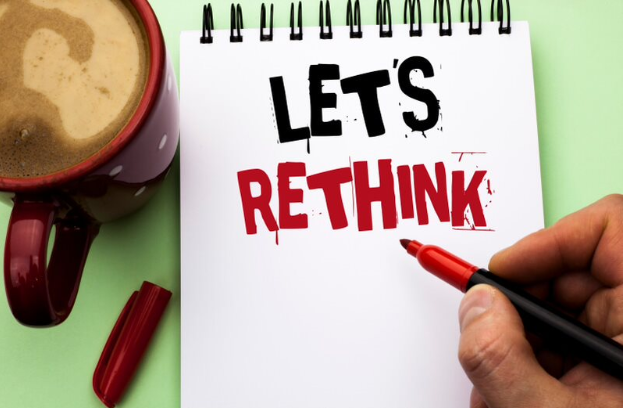Are We Stampeding Our Way to Unsustainable Sustainability Goals?
Due to the pandemic three years ago, we experienced a mass shift towards global digitalisation. The process was already underway; the pandemic merely condensed the timeframe.
Or did it?
We are still in that process, only now we are deeper into it. And now another topic is coming to the fore: sustainability.
What do these two things have in common? Unfortunately, we have seen many failures in both areas due to a simple lack of understanding that leads to a flawed approach.
Let me explain.
Why We’re STILL Digitalizing
While everyone was talking about digitalization, many were, in reality, doing nothing more than digitization.
To be clear, digitization is taking offline data, processes and information and making it available online. Digitalization is transforming how we collect, interrogate and use that data to make better decisions.
That’s why we’re still in the digitalization process. Because so many people scrambled to digitize existing systems just to be able to keep going, they were focused on moving from hard copies, paper, and face-to-face work into a digital world.
But digitalization is not as simple as transferring the real world into a digital system. When you do that, you move all the quirks, flaws and idiosyncrasies of the analogue system and amplify them with digital rules.
Conversely, some people see digitalization as an opportunity to automate everything and remove people from the equation. So it becomes about inventing and introducing tech for tech’s sake.
But digitalization is not about removing the people, replacing them with tools and making the tools work for themselves. It’s not about having cool technology or designing technology to work for technology.
When you create tools for the tech, without first asking ‘what is this for?’ and ‘Who is going to use it?’ you risk building an irrelevant system or process that’s obsolete before it’s even implemented, or that no one wants to use.
That’s why the digitalization process fails so many times. Harvard Business Review estimates that of the $1.3 trillion invested in digitalization projects in 2019, $900 million was wasted on projects that didn’t meet their goals. As a result, projects had to be revisited, goals and approaches reevaluated, and work repeated because the original projects were runaway failures focused on the technology.
How We’re Repeating Mistakes with Sustainability
Why is there so much similarity with sustainability goals?
I hear a lot from organizations: ‘ We have a target. We have a goal. We have to build it. We have to reduce this number to reach this goal.’
It’s the same fundamental mistake as with digitization or digitalization for tech’s sake. Only this time, they’re trying to rehash an existing process or system and ‘green it up,’ or focusing solely on the goals and numbers and creating systems that are not fit for purpose. As a result, they end up building a ‘sustainable’ approach that is not sustainable because nobody wants to use it.
Why?
Because precisely the same as in the digital world, those tools and systems are used by people, who make mistakes with behavioural patterns, psychological economics, and emotions. When a tool or technique is designed without them, they revert to the old way of doing things.
The Equation at the Heart of Design
The equation at the heart of the design is always the same whether we are about creating sustainable offers, sustainable IT, or long-term change and transformation. Yet very few people truly understand this. You only have to search ‘Design equation’ to see that. You will find many people talking about various design processes, and hardly anyone is talking about what makes a successful product or service design. Design success has three factors: How well it produces the desired outcome, how well it meets the human users’ needs, and how widely it is adopted.
Adoption is key when discussing sustainability because we all have to contribute to change for it to be sustainable. Governments are responsible for setting goals, and big companies are working to achieve them.
To sustainably transform into a sustainable world, we must all contribute. But we can’t expect individual humans to all suddenly and spontaneously make the changes required, even if we all knew exactly what those changes should look like. Humans are creatures of habit and resist change, after all.
To effect changes, product and service designers need to understand and consider the values, beliefs, habits and behaviours of the humans using the product or service. That’s the principle at the heart of human-centred design: Always remember that the clients of that solution are human beings.
Sustainability Starts with Humanity
To create a powerful, profitable, and achievable solution, you must first focus on human needs and how to meet them while achieving other goals. Sometimes, you might achieve sustainability with a simple tweak to an existing process. Other times, it might require a ground-up overhaul.
Suppose you don’t start with the human-centric approach. Then, your sustainability projects will be doomed to fail, like the digitization or tech-for-tech’s sake digitalization projects scrapped and abandoned in 2019 and 2020.
Then you will have to rethink, redesign, and reiterate in another couple of years and design solutions for human beings anyway.
Designing for Humans and Sustainability

Instead of throwing good money after bad, now is the time to pause for thought and choose to design for humans AND sustainability, in that order.
It’s time to build solutions for people, with people, and consider that people will use them. Sustainable solutions are not needed to achieve goals. They must create sustainable change in the world to ensure it remains habitable and hospitable for human occupation.
Too many people have forgotten that the point of digitalization was to make people’s lives easier and more fulfilled and to be there to help them and that tech is a tool.
In the same way, many are in danger of entering a loop of creating goals and designing to achieve those goals short-term in ways we either cannot execute or cannot sustain because the solutions don’t meet human needs.
We have an opportunity to create long-term sustainability while making human life easier and better. So let’s not waste it chasing numbers or badges.


